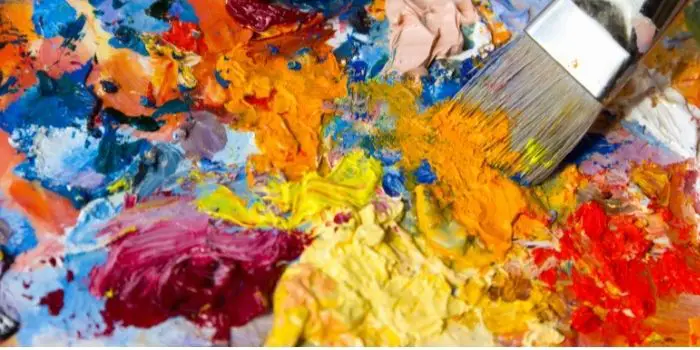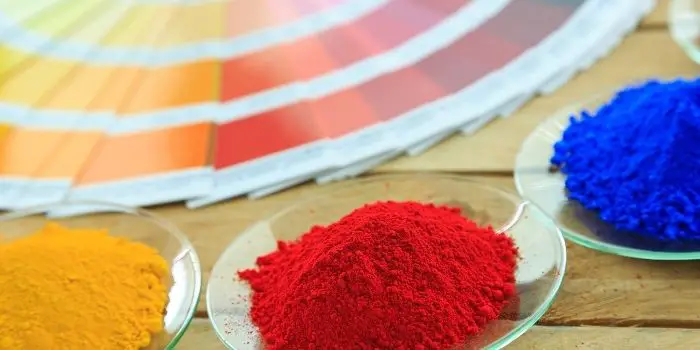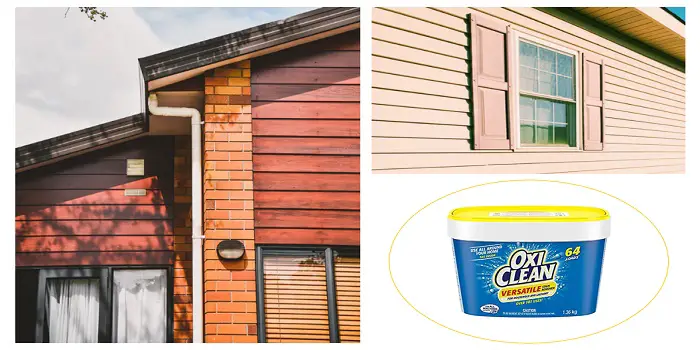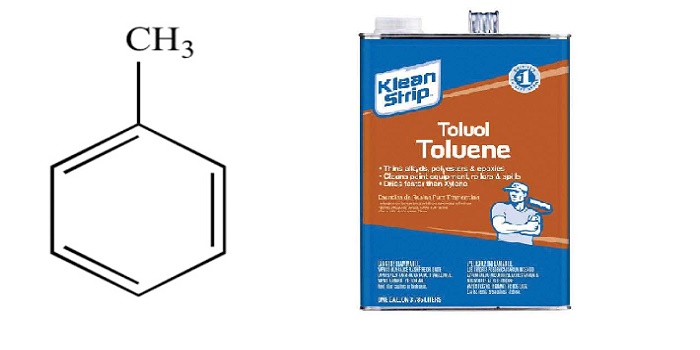
Just getting started with your home renovation project. You’ve chosen your colors, gathered your supplies, and are ready to start painting. But then you realize that the paint is a little too thin and watery.
What can you do to thicken it up?
Well, there are many different substances you can use to thicken paints. These can be useful for altering the paint’s consistency, increasing its coverage, or achieving a specific effect.
In this article, we’ll discuss some of the most common paint thickeners and how to use them. So whether you’re a beginner or an experienced painter, read on for information on how to fix and thicken your soggy paints.
What's Here in the Article:
Why is My Can of Paint Chunky?
There are several potential causes for the chunkiness of your house paint. One reason could be that the paint was stored in a cold environment, causing the pigments to separate from the liquid binder.
Another possibility is prolonged exposure to air, leading to the paint drying out. Additionally, improper mixing or the presence of an incompatible thickener could also contribute to the issue.
To address chunky paint problems, it’s crucial to try out various thickeners, additives, and storage methods to find a suitable remedy. Seeking guidance from seasoned painters or experts in the field can also provide valuable insights and suggestions.
Few General Tips for Thickening Paints
Thickening paint or coatings can be a helpful way to achieve the desired consistency for your project.
There are a variety of different thickening agents that can be used, including solvents, fillers, and powders, depending on the type of paint or coating you are using. So, it is important to do your research and experiment with different thickening agents until you find the ones that work best for your specific needs.
1- Oil Paint
Oil paints are one of the most commonly used paints due to their ability to easily adapt and blend with other substances. Simply leaving the paint exposed to air for some time can help evaporate some of the excess oil, thickening the paint naturally. However, this method may take longer and may not be suitable if you need to thicken the paint quickly.
To thicken the oil paints quickly here are a few other tips that can help…
A. Add Pigments:
Mixing dry pigment directly into the watery paint will help absorb some of the excess oil and thicken the paint. Pigments such as titanium white or zinc white are known for their lower oil content compared to other colors. Mixing these pigments with the watery paint can help thicken it without significantly altering its color.
Gradually add small amounts of pigment until you reach the desired consistency. Be cautious not to add too much pigment, as it can alter the color and drying properties of the paint.
B. Mix with Oil-Free Fillers:
Adding oil-free fillers such as marble dust or calcium carbonate can help absorb excess oil and thicken the paint. Gradually mix in small amounts of filler until you achieve the desired consistency.
Be cautious when experimenting with different mediums and additives, as they may alter the drying time, texture, and appearance of your paint. It’s good to test the method on a small sample of paint first to ensure it produces the desired results without compromising the quality of your work.
C. Alkyd Gel Medium and Alkyd Butter:
Alkyd gel medium and alkyd butter are other common thickeners for oil paints. These substances can achieve different finishes, textures, and effects depending on how they are applied.
For example, if you want to create a more textured look, you can use an alkyd gel medium to build up layers of paint. Alternatively, if you want a smoother finish, you can use alkyd butter to thin out the paint and achieve a more even coating.
2- Latex Paint
To thicken water-based latex paints, simply stirring the paint thoroughly with a paint stick or a stir stick can do the trick. Sometimes, the pigments and binders can settle at the bottom, causing the top layer to appear watery. And when you stir these get mixed with the paint.
Several other methods we can use to make the latex wall paint thicker are as follows:
A. Evaporate the Water:
Allowing the paint to sit for a while will naturally thicken it as some of the water evaporates. Leave the paint can open for a period of time in a well-ventilated area, but be cautious not to leave it open for too long as it may dry out completely. This will leave you with a thicker, more opaque paint that can be used to achieve various looks and finishes.
B. Add an Acrylic Emulsion:
Another way to thicken latex paint is by adding an acrylic emulsion. It’s a type of polymer emulsion that will help to thicken and fortify the paint. This will also increase the paint’s viscosity and help it adhere to surfaces better.
C. Add a Latex Extender or a Paint Conditioner:
A latex extender or a paint conditioner is another common thickening agent for latex water-based paints. This substance will not only increase the thickness of the paint but also make it more resistant to chipping and flaking.
You also have the option to incorporate everyday household items such as cornstarch or flour to thicken latex paints. Add small quantities and blend gradually until you achieve the desired thickness. Exercise caution not to overdo it, as excessive additions may adversely impact the paint’s performance and drying duration.
3- Acrylic Paint
Acrylic paints can also be thickened by adding thickening agents such as flour or cornstarch. Simply mix the paint and thickeners together, and adjust the ratios until you achieve the desired consistency.
For best results, make sure to experiment with your chosen thickeners and additives before using them on an actual painting project.
4- Enamel Paint
If you find your oil-based enamel paint is too thin or watery, remember that thickeners that work with acrylic or latex paints won’t work with them. Depending on the type of enamel, the surface on which it is applied, and the application, you may use one of the two methods to thicken the enamel paints.
- Allow the paint to breathe by opening the can and letting air in. Monitor the consistency and intermittently stir until you achieve the desired thickness. Since this will take time you can try another method if you want faster results.
- For many oil-based paints, a blend of beeswax and turpentine can effectively thicken them but you can also consider using a thickening agent, which can be found at your nearby hardware store.
Consult with an expert to determine the suitable option for your specific type of paint. Always ensure compatibility before mixing any substances into your paint. Verify that the additive you intend to use is compatible with the components already present in your paint.
5- Powder Coatings
If you want to thicken powder coatings, one option is to use a thickening agent such as clay or silica. This can be added directly to the coating mixture before it has been applied, providing additional texture and body.
To achieve the desired thickness, you can also try adding fillers like aluminum or iron oxide powders.

6- Urethane Coatings
Urethane or Polyurethane coating is a liquid plastic substance that dries to create a protective film resembling paint on the surface or layer underneath.
If you find these coatings to be too thin for your specific application, these can be thickened by adding fillers or thickening agents which include aluminum powder, cellulose fibers, and clay. As with powder coatings, it is important to add these substances slowly and in small increments to avoid over-thickening the coating.
7- Varnish
There are various materials you can use to thicken varnish, such as silica, microspheres, or wood flour. Each has its own characteristics, so choose based on your specific needs and preferences.
If you want to thicken the varnish further, you can add some resinous substance like damar varnish or mastic resin. Some powdered pigments like titanium dioxide or zinc oxide can also work depending on the type of varnish you have.
Remember to follow the recommended mixing ratio provided by the manufacturer of the thickening agent. This ratio will vary depending on the type of thickening agent you’re using and the desired consistency.
8- Shellac
Using flake shellac is the simplest method which allows you to control the concentration of the solution and thus its thickness. Flake shellac is often sold in its raw form, which you can dissolve in alcohol to create your own shellac solution. If you already have a shellac solution but want to thicken it, you can simply add more shellac flakes to the solution. This increases the ratio of shellac to alcohol, resulting in a thicker solution.
Another method to thicken shellac is by evaporating some of the alcohol in the solution. You can do this by leaving the container open or by heating the solution gently in a well-ventilated area. Use a double boiler or a water bath to heat the solution but be cautious not to apply too much heat as it can cause the shellac to degrade.
9- Lacquer
Adding more solids to the lacquer mixture by reducing it with lacquer thinner can make it thicker. It’s the simplest of all methods but may affect the drying time and viscosity of the lacquer, so it’s essential to test the mixture on a small area before applying it to your project.
In place of nitrocellulose lacquer thinner, you can even use polyurethane or methyl ethyl ketone (MEK) solvent. This should also work fine but may slightly alter the characteristics of the lacquer.
Another method is to mix paste wood filler into the lacquer. This will not only thicken the lacquer but also add some texture to it. Thickeners such as cellulose-based products, viscosity modifiers, or Xanthan gum (a natural thickening agent) can also be used to thicken lacquer.
10- Watercolor Paint
If you need to thicken watercolor paint, the best option is to use a thickening agent such as gum arabic or xanthan gum. These substances can be added directly to the paint mixture before it has been applied, helping to increase viscosity and improve color adhesion.
11- Tempera Paint
Tempera paint is also a type of water-based paint that has been around for centuries. It is made from a pigment mixed with a binder, typically egg yolk, and then thinned with water.
This paint is most commonly used in schools and by amateur artists because it is relatively inexpensive and easy to work with. Also, it is many times used for professional-grade art projects and to create some of the world’s most famous paintings.
If your tempera paint is too watery due to excess water, you can simply leave the paint container open for some time to allow the water to evaporate, thus thickening the paint. Keep in mind that this method will only work if the excess water is the issue.
If watery paint is not due to excess water, you should thicken it by mixing a small amount of cornstarch or flour with water to create a paste, then gradually add this paste to your watery paint while stirring until you achieve the desired consistency.
Adding a small amount of powdered chalk or plaster of Paris to your tempera paint can also help thicken it. Be sure to mix well to avoid clumps. Alternatively, acrylic mediums, such as acrylic gel medium or modeling paste can also work.
Share the post "What Can I Use to Thicken Paints? (Oil, Latex, Acrylic, etc.)"

Douglas Becker (aka Painter Doug) has over twenty years of experience as a painter in Adkins, Texas. At present, he resides in Florida with his family.
From painting multi-storeyed houses, condos, and apartments to large commercial buildings and small offices, he had served various customers in areas not only in Adkins but also in Southwest Florida, Sarasota, Naples, and many more. To know more about him check here.




